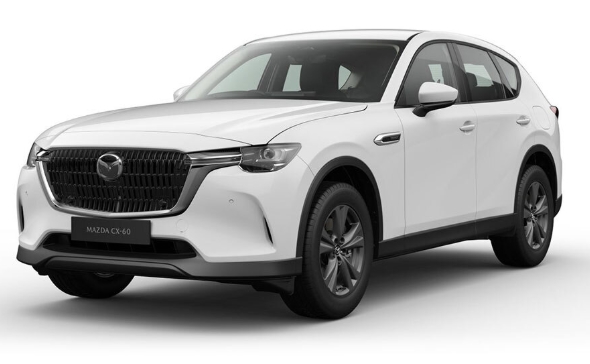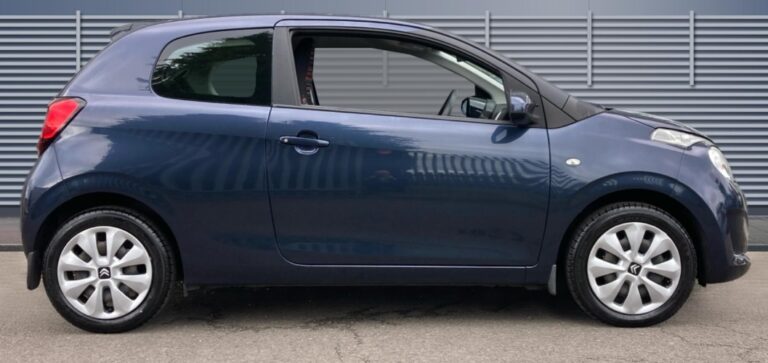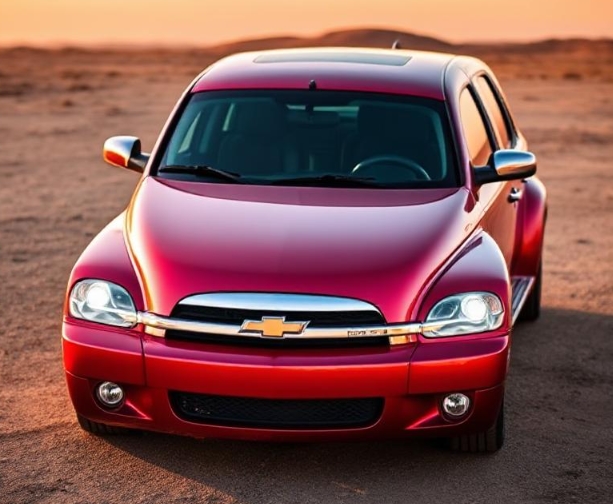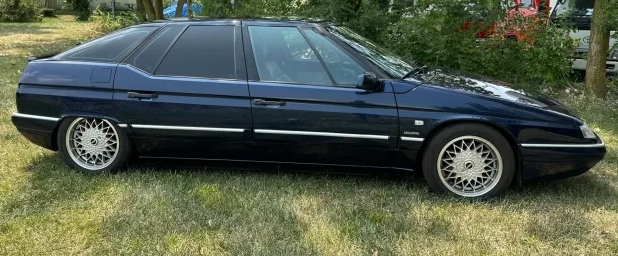The Premium Evolutionary Push: Mazda’s Ambitious New Chapter with the CX-60, CX-70, and CX-80
For decades, Mazda has carved a unique niche in the automotive world, balancing on the fine line between mainstream affordability and spirited, driver-focused engineering. With philosophies like Jinba Ittai—the sense of oneness between horse and rider—and the sensual Kodo design language, the Hiroshima-based company has consistently punched above its weight. In the early 2020s, Mazda embarked on its most audacious transformation yet: a deliberate and calculated push into the premium market, designed to challenge established European and Japanese luxury brands.
The vanguard of this new era is not a single vehicle, but a strategic family of SUVs built upon an entirely new platform. This family, known as the “Large Product Group,” includes the CX-60, CX-70, CX-80, and the North American-market CX-90. To understand their evolution is to understand that it is not a simple chronological sequence of replacement models. Instead, it is a sophisticated, concurrent deployment of a shared architecture, meticulously tailored for the distinct demands of different global markets.
The Foundation: The Skyactiv Multi-Solution Scalable Architecture
Before delving into the individual models, it is essential to understand the groundbreaking platform that underpins them all. Unveiled in the early 2020s, this new architecture represented a fundamental shift in Mazda’s engineering philosophy. Key characteristics include:
Longitudinal Engine Layout: Unlike the transverse (sideways) engine layout of nearly all previous Mazda SUVs, this new platform places the engine longitudinally (front to back), a hallmark of premium, rear-wheel-drive-based vehicles from brands like BMW and Mercedes-Benz.
Rear-Wheel-Drive Bias: While all models come standard with Mazda’s i-Activ All-Wheel Drive system, the platform’s fundamental design is rear-wheel-drive biased. This provides a more balanced weight distribution and a more dynamic, engaging driving experience that is central to the Jinba Ittai ethos.
New Powertrains: The platform was designed to accommodate a new generation of advanced powertrains, most notably a pair of all-new inline-six-cylinder engines—a configuration renowned for its inherent smoothness and power delivery. This was a bold move in an era of downsizing. Alongside the inline-sixes, Mazda developed a powerful Plug-in Hybrid (PHEV) system.
A New Transmission: Mated to these new engines is a new Mazda-developed eight-speed automatic transmission that uniquely forgoes a traditional torque converter in favour of a multi-plate wet clutch, promising quicker, more direct shifts.
This shared foundation allows Mazda to create four distinct vehicles that, while sharing a common soul, are specifically shaped for their intended environments.
The Vanguard: Mazda CX-60 (2022 – Present)
The first model to be introduced from the Large Product Group was the Mazda CX-60, which made its global debut in March 2022. It was designed primarily for markets with narrower roads and different emissions regulations, such as Europe, Japan, and Australia.
Body and Purpose: The CX-60 is a two-row, five-seat SUV that established the “narrow-body” proportion for this new family. Its role was to serve as a direct competitor to premium mid-size SUVs like the BMW X3, Audi Q5, and Lexus NX.
Years Produced: 2022 – Present
Powertrain Offerings: The CX-60 launched with the widest variety of powertrains, reflecting the diverse needs of its target markets.
e-Skyactiv PHEV: This was Mazda’s first-ever plug-in hybrid. It combines a 2.5-litre four-cylinder Skyactiv-G gasoline engine with a 129 kW electric motor and a 17.8 kWh battery pack. The total system output is a formidable 323 horsepower and 369 lb-ft of torque, making it the most powerful production Mazda ever upon its release.
e-Skyactiv D: Debuting shortly after the PHEV, this remarkable 3.3-litre inline-six turbo-diesel engine features a 48V mild-hybrid system. It was offered in two states of tune: a standard version producing 197 horsepower and a higher-output variant with 251 horsepower. This engine was particularly crucial for the diesel-friendly European and Australian markets, offering impressive torque and fuel efficiency.
e-Skyactiv G: In select markets like Australia, a 3.3-litre inline-six turbocharged gasoline engine with a 48V mild-hybrid system was also made available, producing around 280 horsepower.
Trim Levels and Evolution: From its launch, the CX-60 has maintained a consistent three-tiered trim structure, designed to clearly delineate its premium aspirations. This structure has remained stable since its 2022 introduction.
Exclusive-Line: The entry point into the premium CX-60 experience. It established a high baseline of standard equipment, including a full suite of safety features, a 12.3-inch infotainment display, and high-quality fabric or leatherette upholstery.
Homura: The sporty, athletic trim. The Homura (meaning “flame” in Japanese) is distinguished by gloss black exterior elements, including the grille surround, mirror caps, and unique wheel designs. The interior often features black leather seats with a more dynamic, driver-focused ambiance.
Takumi: The pinnacle of Mazda luxury. The Takumi (meaning “artisan” or “master craftsman” in Japanese) grade showcases Japanese craftsmanship. It features bright chrome exterior accents, machine-finished wheels, and an interior adorned with premium materials like Nappa leather, genuine maple wood trim, and unique “Kakenui” stitching on the dashboard.
The American Counterpart: Mazda CX-70 (2024 – Present)
After Mazda launched the three-row CX-90 in North America, a space remained for a two-row premium SUV tailored for the region’s preference for larger vehicles. The Mazda CX-70, unveiled in January 2024 for the 2025 model year, was the answer.
Body and Purpose: The CX-70 is the “wide-body” two-row SUV of the family. Critically, it shares the exact same wheelbase and body dimensions as the three-row CX-90. Its differentiation lies in the removal of the third row, which creates a vast cargo area and repositions the vehicle for buyers who prioritize space and a sporty profile over passenger capacity—such as active couples or small families. It competes with models like the BMW X5, Jeep Grand Cherokee, and Lexus RX.
Years Produced: 2024 – Present (as a 2025 model year)
Powertrain Offerings: The CX-70’s powertrain lineup mirrors that of its three-row sibling, the CX-90, and is focused on gasoline and PHEV options for the North American market.
e-Skyactiv G 3.3L Turbo: The standard engine is a 3.3-litre inline-six mild-hybrid, producing a healthy 280 horsepower and 332 lb-ft of torque.
e-Skyactiv G 3.3L High-Output Turbo (“Turbo S”): For those seeking maximum performance, a high-output version of the inline-six is available, tuned to produce 340 horsepower and 369 lb-ft of torque (on premium fuel).
e-Skyactiv PHEV: The same core plug-in hybrid system from the CX-60 is utilized here, with the 2.5-litre four-cylinder engine, electric motor, and 17.8 kWh battery. Total system output is 323 horsepower.
Trim Levels and Evolution: As a new model for 2025, the CX-70’s trim structure is organized by powertrain. It is designed to offer a clear progression of features.
Turbo Models:
Turbo Preferred: The starting point, very well-equipped with black leatherette, a 10.25-inch center display, and standard AWD.
Turbo Premium: Adds features like a panoramic sunroof, a hands-free power liftgate, and larger 21-inch wheels.
Turbo Premium Plus: The top non-S Turbo trim, including Nappa leather, a 12-speaker Bose audio system, and a 360-degree View Monitor.
Turbo S Models (High-Output Engine):
Turbo S Premium: Builds on the Turbo Premium Plus trim, adding unique interior and exterior design elements befitting the more powerful engine.
Turbo S Premium Plus: The fully-loaded model, incorporating quilted Nappa leather, genuine wood trim, and the most advanced driver-assistance features.
PHEV Models:
PHEV Premium: Largely mirrors the features of the Turbo Premium trim.
PHEV Premium Plus: Aligns with the Turbo Premium Plus, offering Nappa leather and other top-tier amenities.
Completing the Family: Mazda CX-80 (2024 – Present)
The final piece of the puzzle for the “narrow-body” markets was a vehicle that offered three-row flexibility without the larger footprint of the North American CX-90. The Mazda CX-80, which debuted in April 2024, perfectly fills this role.
Body and Purpose: The CX-80 is the direct three-row sibling to the CX-60. To accommodate the third row, its wheelbase has been stretched significantly compared to the CX-60, resulting in a longer overall vehicle. It is designed to be the flagship family hauler in Europe, Japan, and Australia, competing against models like the Hyundai Santa Fe, Kia Sorento, and Volvo XC90.
Years Produced: 2024 – Present
Powertrain Offerings: The CX-80’s engine options are directly carried over from its CX-60 counterpart, focusing on the powerplants most suitable for its intended regions.
e-Skyactiv PHEV: The 323-horsepower plug-in hybrid system is a headline powertrain, offering a blend of performance and zero-emission driving capability.
e-Skyactiv D: The powerful and efficient 3.3-litre inline-six mild-hybrid diesel, with 251 horsepower, is the core offering for long-distance cruising and towing.
Trim Levels and Evolution: The CX-80 adopts the familiar and successful trim hierarchy established by the CX-60, ensuring a consistent brand experience for customers in those markets. A key feature across the trims is the choice of second-row configuration.
Exclusive-Line: The well-appointed base model, available as a full seven-seater with a three-person bench in the second row.
Homura: The sporty grade, often configured as a six-seater with two luxurious captain’s chairs in the second row, creating a walkthrough to the third row. It features the signature blacked-out exterior trim.
Takumi: The ultimate luxury version, also available with the six-seat captain’s chair configuration. It includes the finest materials like light-coloured Nappa leather and real wood inserts, creating an exceptionally premium cabin environment.
.

.
A Strategic Evolution, Not a Linear Path
Looking at the Mazda CX-60, CX-70, and CX-80 together reveals a masterclass in platform strategy. This is not an “evolution” where one model replaces another. It is a concurrent, market-driven deployment designed for maximum global impact.
CX-60 (Narrow-body, 2-row): The agile, premium challenger for Europe and Japan.
CX-80 (Narrow-body, 3-row): The family-focused flagship for Europe and Japan.
CX-70 (Wide-body, 2-row): The spacious, sporty lifestyle vehicle for North America.
CX-90 (Wide-body, 3-row): The ultimate family hauler for North America.
By developing one highly capable and flexible architecture, Mazda has efficiently created four distinct products that feel tailor-made for their customers. This family of SUVs represents the full realization of Mazda’s premium ambitions, cementing the brand not just as a maker of fun-to-drive cars, but as a genuine contender in the luxury automotive space for years to come.







